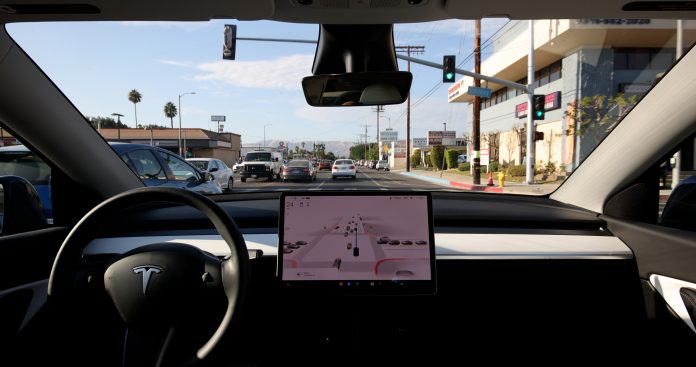The National Highway Traffic Safety Administration (NHTSA) has launched a new investigation into Tesla’s Full Self-Driving (FSD) software after reports of four collisions involving the technology in low-visibility conditions, including a fatal crash. The preliminary probe, announced Friday, will cover approximately 2.4 million Tesla vehicles, a substantial portion of the electric automaker’s fleet in the U.S.
This investigation poses a significant challenge to CEO Elon Musk’s strategy to focus Tesla’s future on self-driving technology and robotaxis. The probe aims to evaluate the performance of Tesla’s FSD in detecting and responding to reduced visibility conditions, as well as other safety concerns. Tesla has not yet responded to requests for comment, and its shares saw a slight decline before the market opened.
Tesla’s Full Self-Driving software, which has been developing for years, is designed to allow vehicles to handle most driving tasks without human input. However, the technology has faced legal scrutiny following multiple accidents, including fatalities. Tesla’s reliance on a “camera-only” system for FSD has raised concerns among industry experts, who argue that low-visibility conditions may impair the vehicle’s ability to navigate its surroundings accurately.
In contrast, Tesla’s competitors, including companies developing robotaxis, use more expensive sensors such as lidar and radar to ensure accurate detection in various environments. Jeff Schuster, vice president at GlobalData, noted that Tesla’s sensor approach could be a significant obstacle to the near-term deployment of fully autonomous vehicles, particularly in challenging weather conditions.
This is not Tesla’s first encounter with federal safety regulators. In December 2022, the company recalled over 2 million vehicles in the U.S. to install new safety features in its Autopilot system after NHTSA raised concerns. The agency is now investigating whether those safeguards were sufficient.
The investigation also follows the recent unveiling of Tesla’s “Cybercab” robotaxi concept, a two-seater electric vehicle without a steering wheel or pedals, designed to navigate using only cameras and artificial intelligence. This latest regulatory hurdle may further delay Tesla’s ambitions for autonomous driving as concerns over the safety and reliability of its technology continue to mount.




